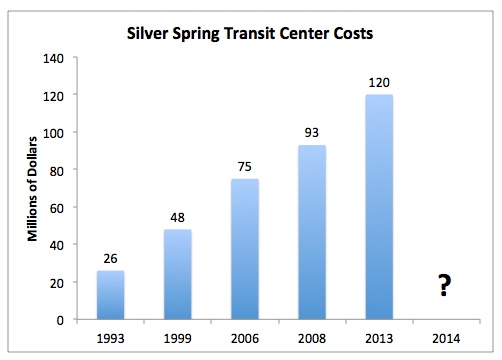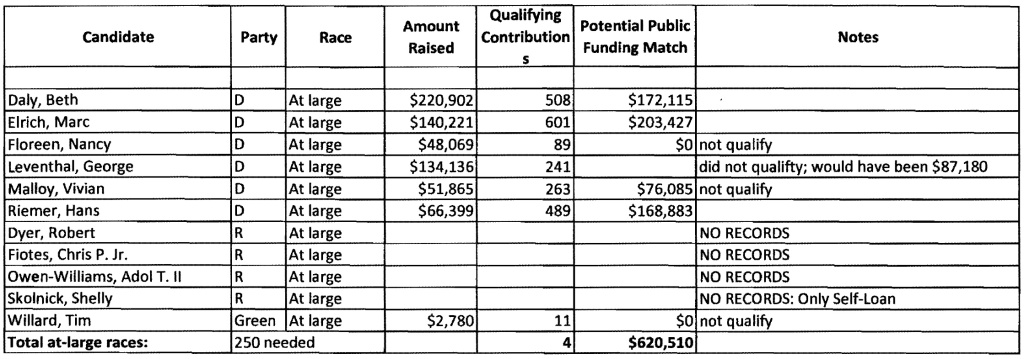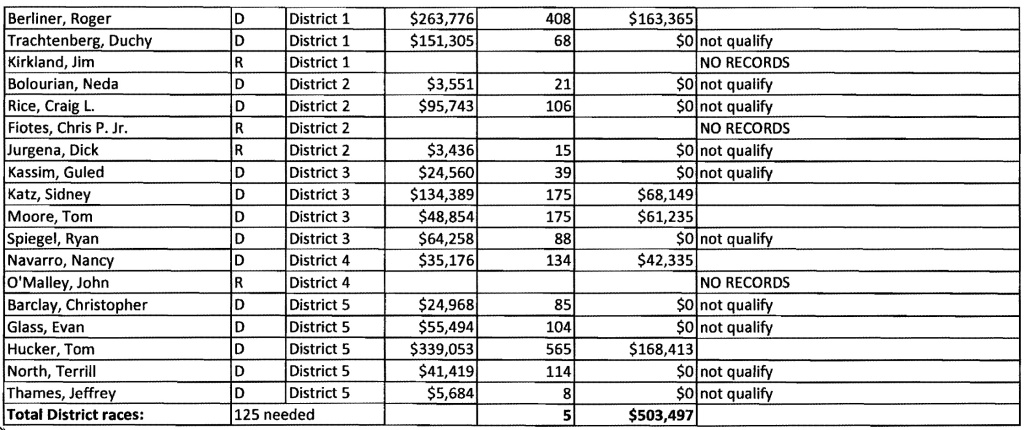MD-03 is a tricky district. It has a Jackson Pollock quality in terms of it’s lines that really means no elected official has a true base here. It does take in enough prime political real estate that if John Sarbanes (still a young man) runs for his father’s US Senate seat one day – there should be a hard thought Democratic primary.
From Montgomery County
It would not totally surprise me if Steve Silverman were interested in running for Congress, and he does indeed reside in the third district. He raised well over two million dollars in his bid for Montgomery County Exec in 2006. I doubt he could do half that for a Congressional campaign today. However, he’d have at least half a million at his disposal, and possibly seven or eight or nine hundred thousand.
A few terms in Congress would surely be an enticing capstone to Ike Leggett’s career (And he too lives in MD-03). He could put together 1.5 to 2.5 million dollars and would be a strong candidate. Ike would be a real heavy weigh. . . and don’t we always say he’d be a better legislator?
Anne Kaiser might clear a million dollars, but I’d be surprised. I wouldn’t be shocked if she had at least $700,000. I’d be blown away if she didn’t clear half a million. I suspect she’d get substantial help from national LGBT Donors and interests.
Craig Zucker could do $250,000-$500,000. He’d also be dynamic enough to stretch those dollars. Craig might do well with SEIU (He ran there home care program in Maryland at one point) which could help substantially. Zucker is an incredibly hardworking candidate and could make himself competitive for the seat.
Eric Luedtke is a lackluster fundraiser but could see substantial labor PAC money come to fund him. I’d also be a bit perplexed if the NEA didn’t spend hundreds of thousands in independent expenditure to support him, especially if Bill Ferguson were in the race. The dynamic between Teacher Union Activist Luedtke and Teach for America Alumnus Ferguson on Education Reform, although they are (from what I understand), quite close in the legislature, might very well make this a proxy fight between powerful labor and reformist interests (similar to the 2013 Boston Mayoral run off between Marty Walsh and Dan Connelly).
Anne Arundel County
Maybe former Annapolis Mayor Josh Cohen. No idea what he could raise. More than 100. . . but who knows how much more? I don’t think he’d be a particularly serious candidate, with little opportunity to expand outside of his base in the City of Annapolis (not big enough to support a real congressional bid). Nice guy, though.
County Councilman Chris Trumbauer might be able to garner substantial backing in IE from the Sierra Club and the League of Conservation Voters. Which is lucky for him because he couldn’t raise more than low six figures on his own. He’d be well positioned to lock down the Anne Arundel County portions of the district (although that’s not a huge base).
Baltimore County
Bobby Zirkin a dynamic, handsome young trial lawyer who happens to be a strong contender to be the next chairman of the Senate Judicial Proceedings Committee. If that happens, his number could be as high as $1.5 million. If not, $650,000-$1,000,000. Senator Zirkin could likely raise very substantial amounts of money from the incredibly tuned in community of Trial Lawyers that finances so many Democratic Stalwarts.
Dan Morhaim – a Delegate and a Doctor makes a powerful combination. Would clear a million easily. Two million might be a stretch. Shares a heavily Jewish Western Baltimore County district with Zirkin. Despite being one of the stronger fundraisers in the house, he lacks enough pizzazz to be a solid congressional contender in my opinion.
Jon Cardin– Would raise a million easily, but not more than $1.2 or 1.3. Would benefit from confusion with his uncle as well. But, I think that Jon is pretty done after the AG Race. However, the Cardin brand is stronger here than it is statewide.
Baltimore City
Brooke Lierman She could raise a million bucks off her last name, and probably another 300K off of her own network. If Hoyer came in to aid his former Chief of Staff’s daughter you could see another quarter million drop in. She’d be competitive against Anne Kaiser for an Emily’s List endorsement. But as we saw with Heather Mizeur in the 2014 Gubernatorial primary they don’t devote a lot of resources to Democratic Primaries in Deep Blue states.
Bill Ferguson – A handsome, white, young Baltimorean State Senator with real education reform credentials. Can he get buy in from national Ed Reform donors and raise mega millions? I’m not sure. A guy to watch, none the less. With a very, very solid base in the rapidly gentrifying, densely Democratic neighborhoods of South Baltimore. Definitely one to watch.
bIn a primary this crowded, with so many disparate bases of support, I have no clue who might come out on top. I’m not going to pretend that I do.
 The costs of the Silver Spring Transit Center are set to rise by significant amounts again in 2014:
The costs of the Silver Spring Transit Center are set to rise by significant amounts again in 2014:



